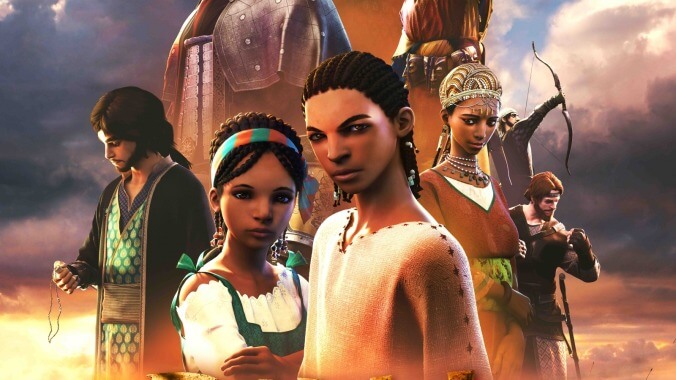The animated Bilal proves Christians don't have a monopoly on inspirational junk

The Bilal of the title is Bilal Ibn Rabah or Al-Habashi, one of the original Muslims, traditionally considered the first muezzin, hand-picked by Muhammad to call the faithful to five-times-daily prayer because of his rich, resonant voice. But Bilal: A New Breed Of Hero is coy on these matters. An English-language animated feature produced in Dubai, it tries to steer around Islam’s distaste for direct depictions of its prophet and religious figures by more or less leaving the world’s second largest faith out of the picture. One can understand the thinking: Out of all the personalities in the narrative of early Islam, Bilal is one of the most broadly appealing, a former slave of Abyssinian or Ethiopian descent whose story touches on the same themes of racial equality addressed in Muhammad’s Farewell Sermon. But by reducing teachings to vague platitudes and inspirational truisms, Bilal robs its religious story of any sense of grace, leaving only those components of early Islamic history generally not considered off-limits for visual interpretation—that is, a lot of early medieval warfare and violence.
At the risk of over-intellectualizing a middling animated film, it should be noted that much of the greatest Islamic art mixes extreme technical sophistication with a refusal of all things figurative—the unique product of a religion founded on a radical rejection of idols and focus on text. (This is something the plot of Bilal covers competently, though it’s murky on what the text might be.) Its ancient theme begins in the Quran, in the tension between the prophetic Meccan surahs and the legalistic Medinan surahs, transforming necessities into artworks that suggest divine inspiration through complexity and elegance, instead of symbolism: calligraphy, elaborately tessellated tiling, dazzling religious architecture. But like the attempted mid-1970s Quranic epic The Message or Majid Majidi’s more recent Muhammad: The Messenger Of God, Bilal ends up grasping for kitsch as it tries to awkwardly squeeze its faith into a very different, often hostile popular form. Those earlier live-action films aspired to the pomp of 1950s Hollywood epics. This one—a generic, sluggishly plotted tale of a hero rising to defy his sniveling masters—approximates the style of a vintage Blizzard cutscene stretched to feature length. The result is nowhere as awesome as it sounds, though it has its cheap charms.
In order to cover up the stiff, dubious character animation, first-time directors Khurram H. Alavi and Ayman Jamal employ a hyperactive simulated camera, whooshing and shaking through canted angles and lens effects while their heroes and villains stumble weightlessly. Kidnapped into slavery along with his sister, Bilal (Jacob Latimore as a teenager, Adewale Akinnuoye-Agbaje as an adult) grows up in the cruelty and cynicism of early 7th-century Mecca, where merchants hawk idols to the superstitious masses and Safwan (Mick Wingert), the spoiled bully son of Bilal’s master, Umayyah Ibn Khalaf (Ian McShane), uses passersby for archery practice. (Those who know their sahabah will recall that Safwan later converted to Islam and became one of Muhammad’s allies, though the character presented here isn’t quite so dynamic.) The swishing, slow-mo flashiness of the camera animation only fits the movie’s surprisingly competent and watchable battle scenes, which are violent enough to earn it a PG-13 rating. But Bilal takes its time getting there, slogging through scenes of mustache-twirling and eyebrow-arching villainy while its voice cast barks out boilerplate dialogue (including that old standby of religious epics, “Where is your god now?”), their out-of-sync animated lips sometimes conveniently obscured by masks or scarves.